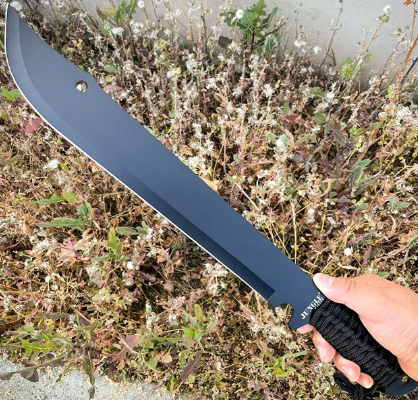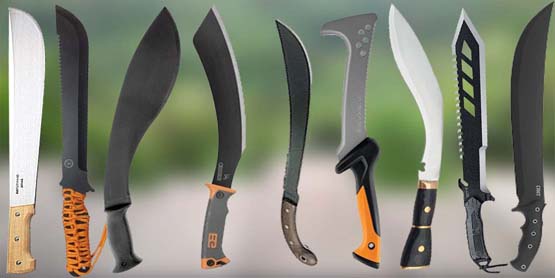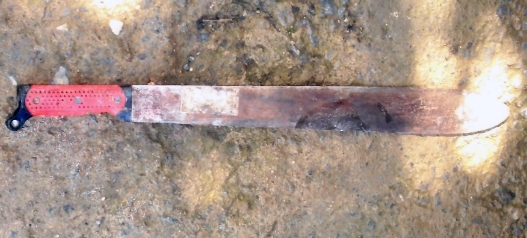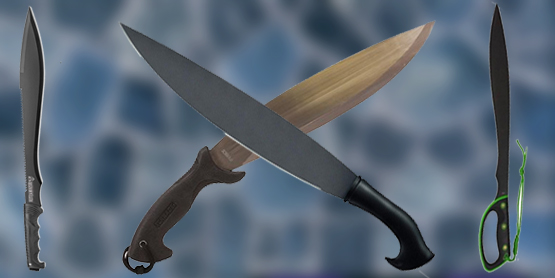Machete vs Parang – Which One Comes Out on Top
Table of Contents
Unveiling the Roots- Tracing the Epic Origins of Machetes and Parangs
Both machetes and parangs have a long history and come from different regions of the world.
The machete originated in Central and South America, where farmers and plantation workers used it to clear vegetation and harvest crops. The word “machete” comes from the Spanish word “macho,” which means “strong” or “male.”
The Parang comes from Southeast Asia, particularly Indonesia, and Malaysia. Farmers and hunters used it for various tasks, such as cutting through thick jungle vegetation, chopping wood, and butchering animals. The word “Parang” is derived from the Malay language, which means “cleaver” or “chopper.”Exploring the Shared
Features of Machetes and Parangs
Despite their different origins, machetes, and parangs share some similarities.
Both are large knives with a blade length between 10 and 18 inches and a weight of around 1-2 pounds.
They are designed to be used with one hand and have a straight, single-edged blade.
These cutting tools are versatile and can be used for various tasks such as cutting through vegetation, clearing paths, chopping wood, and preparing food.
Differences Between Machetes and Parangs
Blade Shape and Design
A machete blade is usually straight and tapered, with a sharp point at the end. It has a thinner and more flexible blade than a Parang, which makes it ideal for tasks that require more finesse, such as cutting grass, vines, and other soft materials.
The blade of the Parang is curved and wider towards the tip, with a more substantial spine. This design makes it more suitable for tasks that require more force, such as chopping through thicker branches and limbs.
Blade Material
Machetes are commonly made from carbon steel, a durable and affordable material with a sharp edge. However, it is prone to rusting and requires regular maintenance. Parangs are often made from high-carbon steel or stainless steel. High carbon steel is known for its durability and ability to hold an edge, while stainless steel is more corrosion-resistant. The choice of material depends on the tool’s intended use and personal preference.
Handle Design
Machetes usually have a simple handle design, with a wooden or plastic grip that provides a comfortable and secure grip. Some models may have a full tang design, where the blade extends into the handle, providing additional strength and stability.
Parangs typically have a more elaborate handle design, with a curved handle that provides a comfortable and ergonomic grip. The handle may be made from wood or synthetic materials, with a guard at the bottom to prevent the user’s hand from slipping onto the blade.
Weight and Balance
Machetes are typically lighter and more balanced than parangs, which makes them easier to handle and maneuver. The weight of a machete is usually concentrated towards the end of the blade, providing more power and force when swinging.
Parangs are heavier and less balanced than machetes, making them more suitable for chopping and hacking tasks. The weight of Parang is usually concentrated towards the middle of the blade, providing more control and stability when chopping.
Which One Should You Choose: Machete or Parang?
A Parang is a better choice for heavy-duty tasks such as chopping wood, clearing thick vegetation, and butchering large animals. It is heavier, more robust, and has a curved blade that provides more force and power when chopping.
Final Words
Machetes and parangs are versatile and useful tools with unique features and purposes. By understanding their differences and similarities, you can choose the right tool for your needs and use it safely and effectively. Whether you are a farmer, hunter, or outdoor enthusiast, a machete or a Parang can be a valuable addition to your tool collection.
Frequently Asked Questions (FAQs)
Which Tool is Better for Clearing Thick Vegetation, a Machete or a Parang?
A machete and a Parang can effectively clear thick vegetation, but a machete is generally more efficient due to its longer blade length and straighter edge. A Parang may be better for more precise cuts in dense vegetation.
Is a Machete more Lightweight and Easier to Handle Than a Parang?
Machetes are usually lighter and easier to handle than parangs due to their thinner blades and ergonomic handles.
Is a Parang More Suitable for Jungle Environments than a Machete?
Parangs are commonly used in Southeast Asia and designed for jungle environments. Still, machetes are also commonly used in jungle settings and may be better for certain tasks like clearing paths or chopping through thick underbrush.









